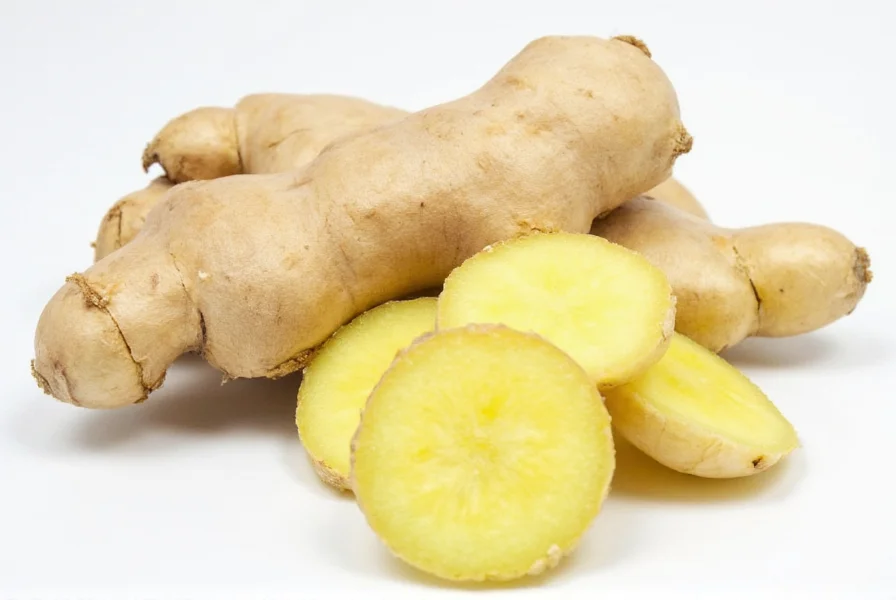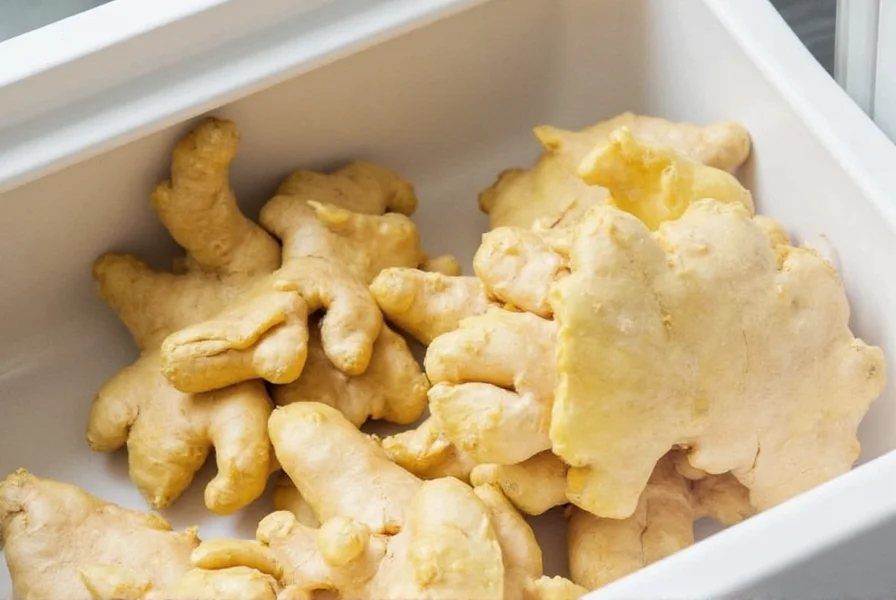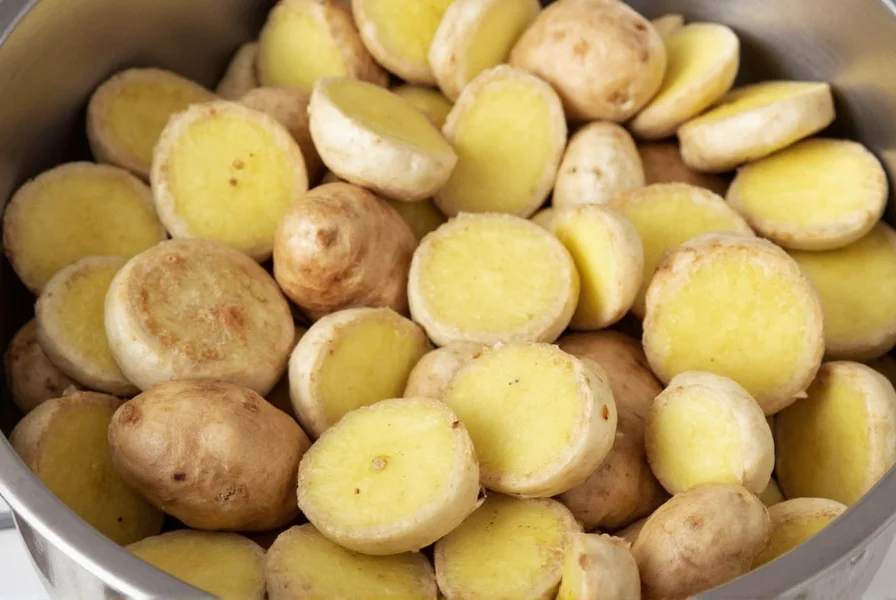No, fresh ginger root doesn't strictly need refrigeration for short-term storage, but refrigerating it significantly extends its shelf life. At room temperature, ginger lasts 3-7 days, while properly stored in the refrigerator, it can stay fresh for 2-3 weeks. For long-term storage, freezing is the most effective method, preserving ginger for up to six months.
Understanding proper ginger storage prevents waste and ensures you always have this versatile ingredient ready for cooking, baking, or making teas. Whether you've just returned from the grocery store with a fresh knob of ginger or found yourself with leftovers from a recipe, knowing the optimal storage methods makes a significant difference in maintaining quality and flavor.
The Science Behind Ginger Storage
Ginger root contains high moisture content and natural sugars that make it susceptible to mold growth and dehydration. The ideal storage environment balances humidity control with temperature to slow down these natural degradation processes. Unlike some root vegetables that prefer cool, dark pantries, ginger responds better to cooler temperatures with moderate humidity.

Refrigeration: Benefits and Best Practices
Refrigeration slows enzymatic activity and microbial growth that cause ginger to spoil. When stored properly in the refrigerator:
- Ginger maintains its firm texture and pungent flavor for 2-3 weeks
- The cool environment prevents premature sprouting
- Moisture loss is minimized compared to room temperature storage
Proper refrigeration technique: Wrap unpeeled ginger in a paper towel to absorb excess moisture, then place it in an airtight container or resealable plastic bag. Store in the vegetable crisper drawer where humidity levels are optimal. Avoid washing ginger before storage, as excess moisture accelerates spoilage.
Room Temperature Storage: When It Works
Storing ginger at room temperature works acceptably for immediate use (within 3-7 days). This method suits situations where you'll use the entire piece quickly. Place unpeeled ginger in a cool, dark spot with good air circulation, away from direct sunlight and heat sources. A kitchen counter away from the stove or a pantry shelf works well.
Room temperature storage becomes problematic when humidity fluctuates or temperatures rise above 70°F (21°C). Under these conditions, ginger dries out faster and develops mold more quickly. This storage method works best during cooler seasons or in air-conditioned environments.
Freezing Ginger: Long-Term Solution
For extended storage beyond three weeks, freezing ginger proves most effective. Frozen ginger maintains quality for 4-6 months without significant flavor loss. The freezing process actually makes ginger easier to use in many recipes.
| Storage Method | Shelf Life | Best For |
|---|---|---|
| Room Temperature | 3-7 days | Immediate use, small quantities |
| Refrigeration | 2-3 weeks | Regular cooking needs |
| Freezing | 4-6 months | Long-term storage, bulk purchases |
To freeze ginger properly, peel the root first or leave it unpeeled (peeling frozen ginger is easier). Cut into 1-2 inch chunks or grate directly onto a parchment-lined tray before transferring to freezer bags. Frozen ginger goes straight into recipes without thawing—simply grate what you need.
Recognizing Spoiled Ginger
Knowing when ginger has spoiled prevents food waste and potential health issues. Discard ginger showing these signs:
- Mold growth (fuzzy spots in white, green, or black)
- Soft, mushy texture when pressed
- Darkened flesh (yellow or gray instead of bright yellow)
- Sour or unpleasant odor
- Excessive wrinkling beyond normal drying
Sprouting ginger remains safe to eat—the sprouts simply indicate the root is trying to grow. Remove sprouts and use the ginger promptly. Slightly wrinkled ginger often retains good flavor; just peel away any dry outer layers.
Specialized Storage Techniques
Different cooking needs call for specialized storage approaches:
Vacuum sealing: Extends refrigerated shelf life to 4-6 weeks by removing oxygen that accelerates spoilage. Works best with peeled, sliced ginger.
Submerging in alcohol: Preserves ginger for several months while infusing flavor into the liquid. Ideal for cocktail preparation or Asian cuisine.
Drying: Creates shelf-stable ginger powder or slices that last 6-12 months. Requires a dehydrator or low-temperature oven.

Maximizing Ginger Freshness: Practical Tips
Implement these professional storage techniques to get the most from your ginger:
- Buy ginger with smooth, taut skin and minimal wrinkles
- Store whole pieces rather than pre-cut to minimize exposed surface area
- Keep ginger away from strong-smelling foods as it readily absorbs odors
- For frequent users, maintain a small frozen supply and refrigerate what you'll use in the next week
- When using refrigerated ginger, return unused portions to storage immediately—don't leave at room temperature
Understanding how to store ginger properly transforms this common kitchen staple from a frequently wasted item into a reliable ingredient always ready for your culinary creations. Whether you're making stir-fries, baking gingerbread, or brewing soothing teas, proper storage ensures optimal flavor and texture every time.
Frequently Asked Questions
Can you store ginger in water to keep it fresh?
While some people store ginger in water, this method actually accelerates spoilage. Water promotes mold growth and causes ginger to become waterlogged and mushy. For short-term storage, the refrigerator method using a paper towel and airtight container works significantly better than water storage.
Does peeled ginger last as long as unpeeled ginger?
No, peeled ginger has a much shorter shelf life. The protective skin acts as a natural barrier against moisture loss and microbial growth. Peeled ginger lasts only 1-2 weeks in the refrigerator compared to 2-3 weeks for unpeeled ginger. If you must peel ginger in advance, store it submerged in dry sherry or vodka in an airtight container to extend its freshness.
How do you revive dried-out ginger?
Slightly dried ginger can often be revived by trimming the dry outer layers and using the moist interior. For more severely dried ginger, grate what remains and freeze the pieces for future use in cooked dishes. Extremely dried or hard ginger won't regain its original texture but can still provide flavor in soups, stews, or teas where texture isn't critical.
Is it safe to eat ginger that has turned blue?
Some varieties of ginger naturally develop a bluish hue when cut, particularly Hawaiian blue-ring ginger. This color change is harmless and doesn't indicate spoilage. However, if ginger develops unusual blue, green, or black mold spots, it has spoiled and should be discarded. Natural bluish tones appear throughout the flesh, while mold typically appears as fuzzy surface growth.
Can you store ginger with other root vegetables?
It's best to store ginger separately from other root vegetables like potatoes, onions, and garlic. These vegetables release gases and moisture that can accelerate ginger's spoilage. Ginger also readily absorbs surrounding odors, which can affect its flavor. For optimal freshness, give ginger its own storage container in the refrigerator's crisper drawer.











 浙公网安备
33010002000092号
浙公网安备
33010002000092号 浙B2-20120091-4
浙B2-20120091-4